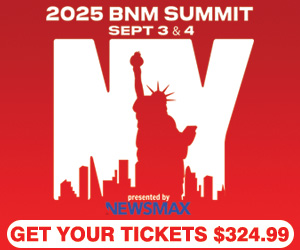We’ve been reviewing the Nielsen CPR for the past two weeks and while there won’t be a quiz at the end of this column (“Compare and contrast the average weights for the market with the number of unique panelists” with a minimum of 500 words), this column will wrap it up for you.
We left off with the market and station average weights and raw time spent listening, so let’s move on to the “Distribution of Heavy Listener Quarter Hours”.
While your (or your competitor’s) heavy listeners will be there, for the purposes of this chart, Nielsen considers heavy listening to be a minimum of 28 quarter hours per month. That’s an average of one quarter hour per day which doesn’t seem very heavy to me. I’ve never found much value in this chart. The top 25 panelists are already in a previous chart with a lot more specifics.
Here, you can see how many “heavy” listeners you had and compare to the previous month and one year earlier. However, the little table embedded in the distribution chart is probably the best item to look at here.
Let’s move on to “QH Contribution and Percent of Station Total”. I used to start my analyses with this chart because it gave me the grand total of QHs generated by the station and compared it to the previous month as well as one year ago.
Are you improving or regressing? The other interesting piece of information is the percentage of your QHs generated by the top ten and top 25 panelists. If a big percentage of your QHs are coming from just the top ten, you’re sitting on a knife edge. Of course, based on the sample sizes, all of PPM is a knife edge. What if one or two of your top panelists leave the panel for any reason?
While we all want our P1s to spend a great deal of time with us, consistency over time suggests that you don’t want to be dependent on just a couple of panelists for your success. Is there a set number? Not in my mind, but you would be wise to trend this information in a spreadsheet and give yourself an early warning system.
Next is “Number of Panelists by Specific Age” and you can see the age and gender of your panelists. Remember, this is everyone, whether they gave you one QH in the month or 100. The next charge is a slight twist “Total Quarter Hours by Specific Age” and here you can easily see the demo that’s driving your audience.
Yes, you can get this post-weighting in PD Advantage as well, but this is a useful visual way to see where the lion’s share of your audience is coming from.
Now we move to “Percent of Total Station and Market QHs by Specific Age”. The station-specific information is already in the previous charts, but the blue line is interesting. What age groups spend the most time with radio in your market? It’s probably 50+, but here’s where you see it.
The next chart, “Station QHs by Install Date” shows how long your panelists have been in the panel. Look for the dots that are up on the y-axis (Quarter Hours). Remember that two years in the panel is the maximum (that can be stretched to 26 months under certain circumstances).
If your heaviest listeners are nearing the two-year mark, watch out! Not that you can do much about it, but maybe that is the time to beg for more marketing money (if there is any at all), contesting, or other promotions. At least, you’ll have data behind the request.
Finally, we get to the zip code report. Where do your panelists live? This lets you see where your heaviest panelists reside and with some manipulation, you may be able to match up the top panelists with their zip codes. Do you target these panelists? Just leave them alone because they already think you’re a great station? If it’s a competitor, some micro-targeting (social, etc.) may be an inexpensive move for you.
That’s it! No quiz for you, but I hope you’ve learned something over the past three columns. The CPR can be an incredibly useful tool for PPM markets if you do your best to get the most from it. Even if you consider yourself an expert at using the CPR, it often helps to have a second opinion. I’m good with this stuff, but not always right, so if you have thoughts about it, drop me a note at doctoredresearch@gmail.com.
Let’s meet again next week.




